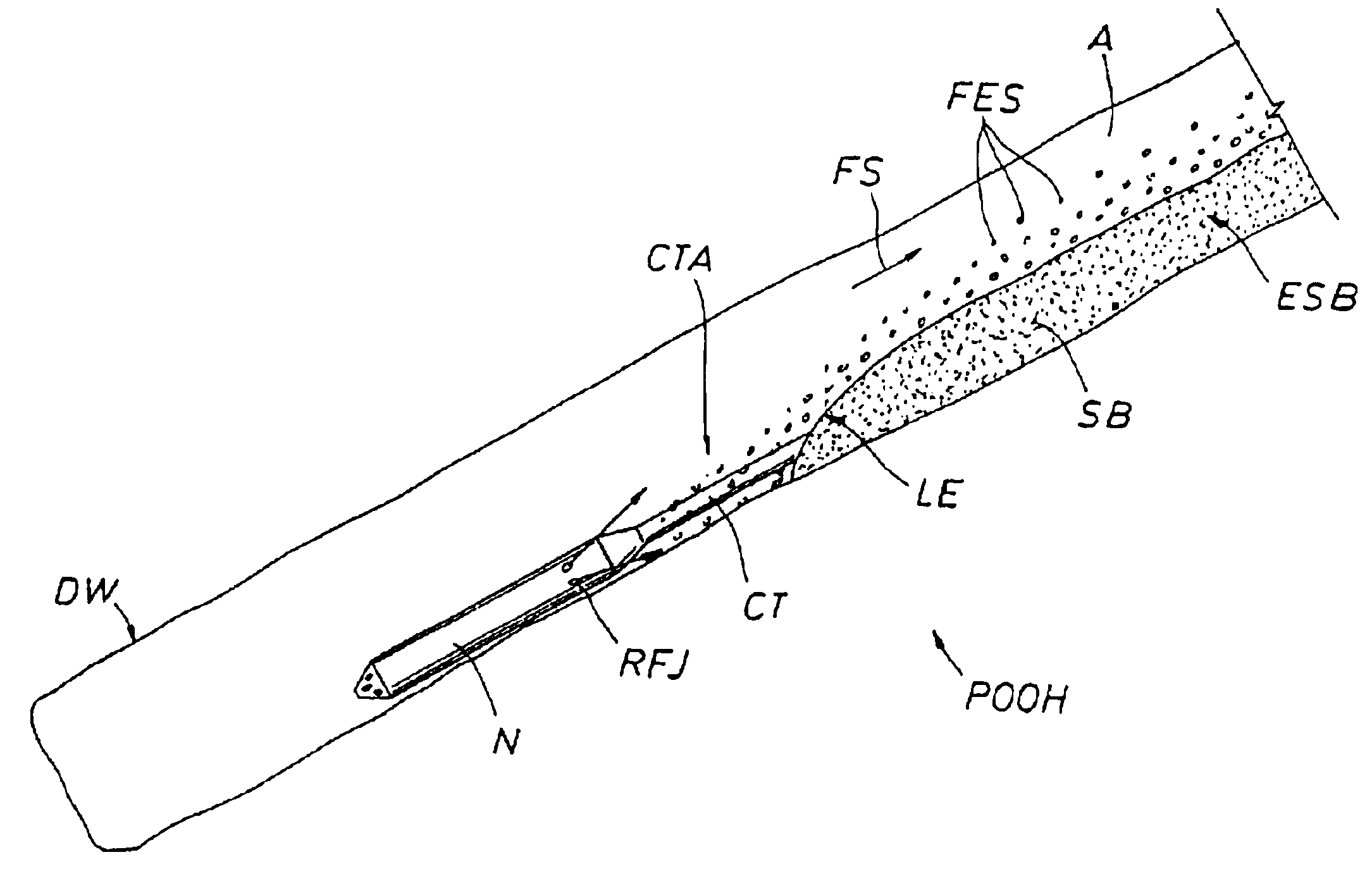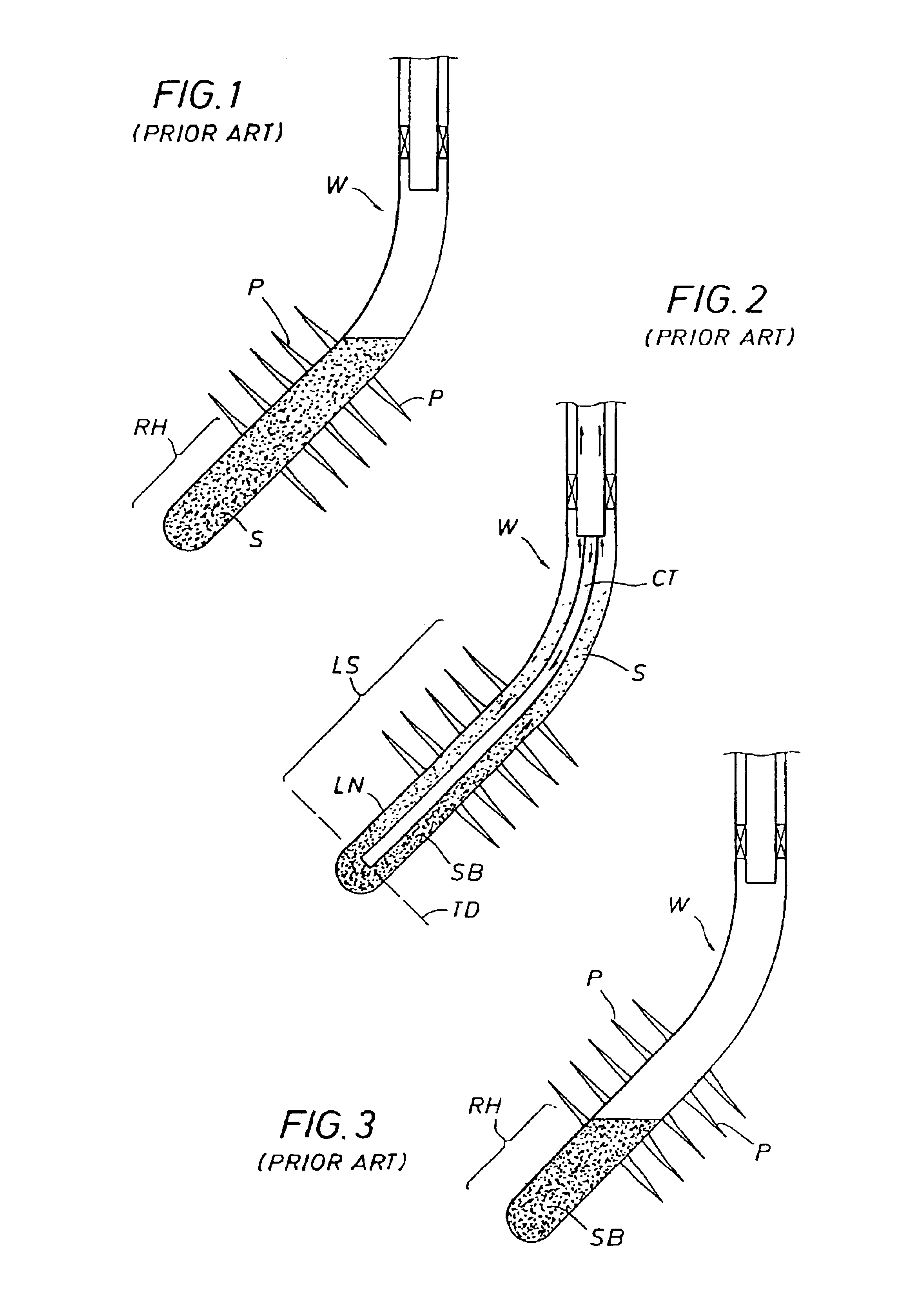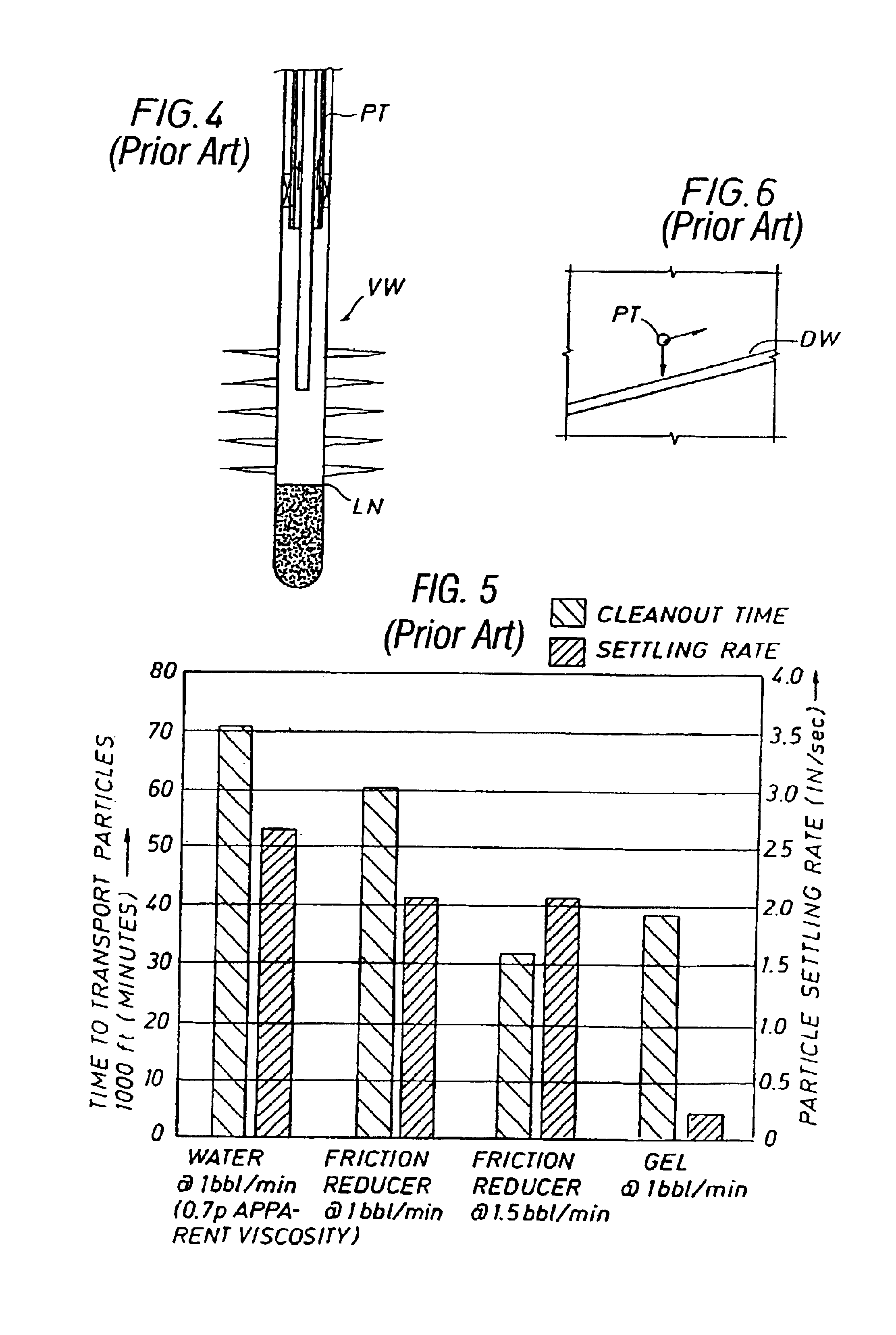Coiled tubing wellbore cleanout
- Summary
- Abstract
- Description
- Claims
- Application Information
AI Technical Summary
Benefits of technology
Problems solved by technology
Method used
Image
Examples
example
[0097]Wiper trips are a conventional field practice to clean a hole of sand in cleanout operations. A wiper trip can be defined as the movement of the end of coiled tubing in and out of the hole, at least a certain distance. In order to clean solids out of the wellbore, a proper wiper trip speed should be selected based on operational conditions. There is no previously published information related to the selection of the wiper trip speed. In this study, numerous laboratory tests were conducted to investigate wiper trip hole cleaning and how hole cleaning efficiency is influenced by solids transport parameters such as; a) nozzle type, b) particle size, c) fluid type, d) deviation angle, e) multi-phase flow effect.
The results indicate the following:
[0098]1. Compared with stationary circulation hole cleaning, the use of the wiper trip produces a more efficient cleanout.[0099]2. For a given operational condition, there is an optimum wiper trip speed at which the solids can be completel...
PUM
 Login to View More
Login to View More Abstract
Description
Claims
Application Information
 Login to View More
Login to View More - R&D
- Intellectual Property
- Life Sciences
- Materials
- Tech Scout
- Unparalleled Data Quality
- Higher Quality Content
- 60% Fewer Hallucinations
Browse by: Latest US Patents, China's latest patents, Technical Efficacy Thesaurus, Application Domain, Technology Topic, Popular Technical Reports.
© 2025 PatSnap. All rights reserved.Legal|Privacy policy|Modern Slavery Act Transparency Statement|Sitemap|About US| Contact US: help@patsnap.com



